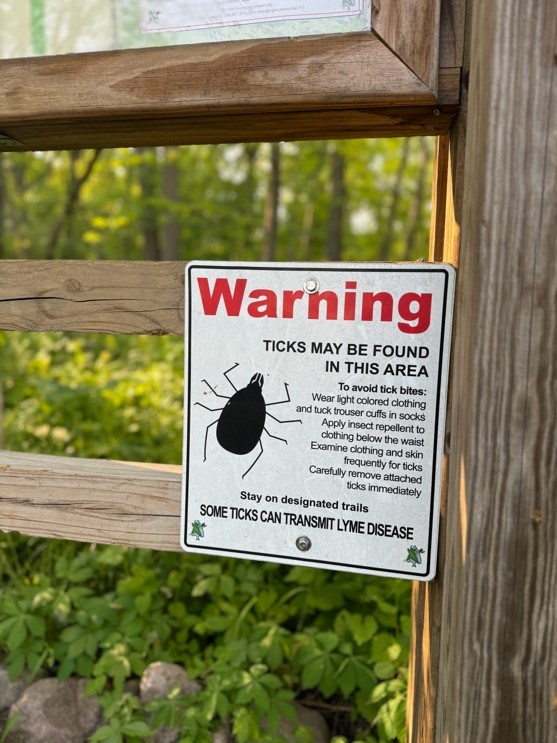9 Month Guarantee For All Pest Control Work PROMPT RESPONSE – EFFECTIVE TREATMENT WE ELIMINATE PEST PROBLEMS WE SEAL MICE OUT OF YOUR HOME OR BUILDING
Ticks in Northern Illinois: Dangers and History
Introduction

Types of Ticks in Northern Illinois
- This tick is notorious for transmitting Lyme disease, babesiosis, and possibly ehrlichiosis to humans.
- While it has been found sporadically in many Illinois counties, it is more common in limited areas, primarily in Northern Illinois.

- Although less associated with Lyme disease, the American dog tick can transmit Rocky Mountain spotted fever.
- It is commonly found in grassy and wooded areas, making it a concern for outdoor enthusiasts.

- While less common in Northern Illinois, the brown dog tick can transmit diseases to both humans and dogs.
- It prefers indoor environments and can infest homes and kennels.

Diseases Associated with Tick Bites
- Caused by the bacterium Borrelia burgdorferi, Lyme disease is one of the most common tick-borne illnesses in the state.
- Approximately 43% of ticks collected in Illinois are positive for Lyme disease, with Winnebago County having the highest rate at 71%!
- Symptoms include fever, fatigue, joint pain, and a characteristic “bull’s-eye” rash.
- Early diagnosis and treatment are crucial to prevent complications.
- Transmitted by the American dog tick, RMSF causes fever, headache, and a rash.
- Without prompt treatment, it can lead to severe complications.
- Another disease transmitted by ticks, ehrlichiosis can cause flu-like symptoms, including fever, fatigue, and muscle aches.
- Early detection is essential for effective treatment.
Climate has a profound impact on tick populations:
- Warmer Temperatures: Ticks thrive in temperatures at or above 7.2°C. Warmer spring temperatures and milder autumns allow blacklegged ticks to emerge earlier and feed for longer periods.
- Wetter Conditions: Increased precipitation provides favorable habitats for ticks. They require moisture to survive and reproduce.
- Wildlife: As ticks are ectoparasites, Conditions which produce or encourage an abundance of wildlife such as squirrels, rabbits, deer, etc. to come close to homes, increases the risk humans and pets, as they fall off and then lay in wait for a new host.
- Extended Seasons: Longer growing seasons mean more opportunities for ticks to feed and reproduce. This leads to higher tick densities and increased disease transmission risk.
Habits
Ticks cannot fly, jump, and do not fall from tall trees. Instead, they climb (preferably 16” to 24”) where they lay in wait upon the tips of tall blades of grass, weeds, shrubbery, plants, or even furniture and grab onto humans or animal passersby. Once on clothing or fur they will attach to skin withing 1-2 hours and begin feeding. Typically, they unnoticed as they apply an anesthetic saliva before feeding.
How can know if my property has ticks?
- Fasten a one square yard of fabric to a piece of wood
- Pull the string behind you through your yard
- Hang the cloth and examine for ticks
What can I do to control ticks myself?
- Remove leaf litter.
- Clear tall grasses and brush around homes and at the edge of lawns.
- Mow the lawn frequently.
- Stack wood neatly and in a dry area (discourages rodents).
- Keep playground equipment, decks, and patios away from yard edges and trees.
- Discourage unwelcome animals (such as deer, raccoons, and stray dogs) from entering your yard by constructing fences.
- Remove old furniture, mattresses, or trash from the yard that may give ticks a place to hide.
In combination with the controls mentioned above, a few pesticides exist that may also be appropriate.
Ticks and Spiders are TOUGH! Most pesticides will have little effect. That said… very specialized pesticide formulations called acaricides can kill ticks and spiders.
A thorough treatment using acaricides, by a Certified Pest Control technician, can reduce tick activity 80-90%! Treating in areas bordering wooded/wild land, where tick risk is highest, is an effective measure you can take in protecting your family from ticks and the diseases they carry.
Conclusion
If you are concerned about Ticks, call Fox Valley Environmental Pest Control! All of our technicians receive best in class training, and work to achieve certifications through Purdue University and the State of Illinois. Ticks carry numerous diseases, so it’s important to have a professional with the right tools evaluate and appropriate materials to eliminate these pests.
Taking preventive measures, such as using tick repellents such as Permethrin, wearing protective clothing, and checking for ticks after spending time outdoors, can help reduce the risk of exposure. Many suburban towns in our coverage such as Barrington, Elgin, Campton Hills, Yorkville, and more have homes in close vicinity to natural areas that are prone to tick infestation.
Prevention and early intervention are key to staying safe in tick-prone areas.
Stay vigilant, and enjoy the outdoors responsibly! 🌿🦟🌞
